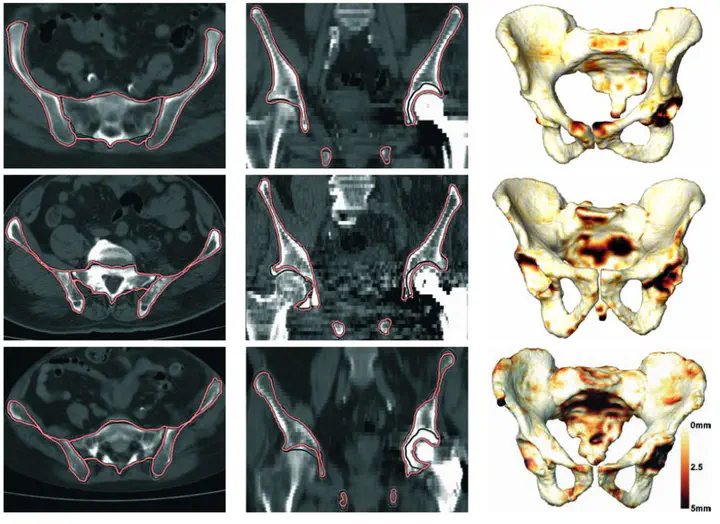Automatic Segmentation of the Pelvic Bones From CT Data Based on a Statistical Shape Model

Abstract
We present an algorithm for automatic segmentation of the human pelvic bones from CT datasets that is based on the application of a statistical shape model. The proposed method is divided into three steps: 1) The averaged shape of the pelvis model is initially placed within the CT data using the Generalized Hough Transform, 2) the statistical shape model is then adapted to the image data by a transformation and variation of its shape modes, and 3) a final free-form deformation step based on optimal graph searching is applied to overcome the restrictive character of the statistical shape representation.
We thoroughly evaluated the method on 50 manually segmented CT datasets by performing a leave-one-out study. The Generalized Hough Transform proved to be a reliable method for an automatic initial placement of the shape model within the CT data. Compared to the manual gold standard segmentations, our automatic segmentation approach produced an average surface distance of 1.2 ± 0.3mm after the adaptation of the statistical shape model, which could be reduced to 0.7±0.3mm using a final free-form deformation step. Together with an average segmentation time of less than 5 minutes, the results of our study indicate that our method meets the requirements of clinical routine.